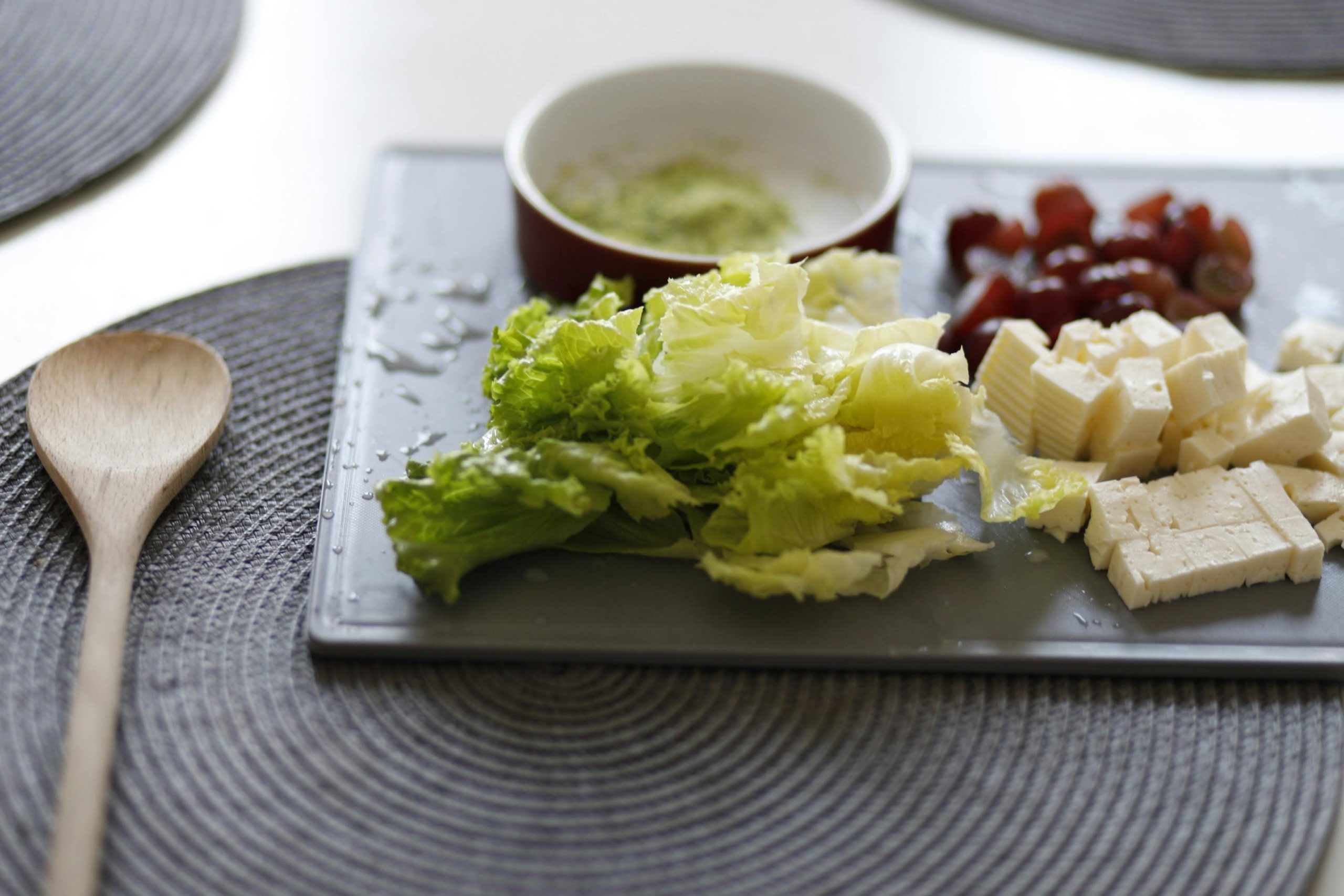Craving a bowl of ramen but want to keep it plant-based and bursting with flavor?
Finding the right recipe and ingredients for vegan ramen that doesn’t skimp on taste can be a challenge.
A delectable vegan ramen can be crafted using a rich mushroom broth enhanced with miso paste, combined with chewy noodles, tofu, and fresh vegetables like bok choy and daikon radish.
In this complete guide, we’ll explore the essential ingredients, the art of broth-making, and provide a step-by-step guide to preparing your own delicious plant-based ramen, along with tips on storage and reheating.
Essential Ingredients for Crafting Perfect Plant Based Ramen

Crafting the perfect bowl of plant-based ramen begins with selecting the right ingredients. Quality and freshness are paramount, as they significantly enhance both the flavor and nutritional value of the dish. From the base of the broth to the type of noodles and the toppings, each component plays a crucial role. Achieving a delicious bowl of vegan ramen involves more than just substituting animal products with plant-based alternatives; it requires careful consideration of each ingredient’s contribution to the final taste and texture.
The broth, often considered the soul of any ramen, should be rich and flavorful, incorporating elements like mushrooms, seaweed, and robust spices. Fresh vegetables, such as bok choy and daikon radish, add crunch and freshness, while proteins like tofu or tempeh contribute substance. Choosing the right type of noodles—whether traditional wheat or alternative grains—is also crucial, as they need to complement the broth well without becoming soggy.
When assembling the ingredients for your vegan ramen, consider the balance of flavors and textures. The broth should be umami-rich, the noodles chewy yet tender, and the toppings varied in flavor and texture. By focusing on high-quality, fresh ingredients and how they interact within the dish, you can create a plant-based ramen that is not only satisfying but also a delightful culinary experience.
Choosing the Right Noodles for Your Plant Based Ramen

Choosing the right noodles for your plant-based ramen can significantly affect the outcome of your dish. While traditional ramen noodles are made from wheat, they may not always be vegan due to the inclusion of eggs. Look for explicitly labeled vegan ramen noodles at Asian markets or health food stores to ensure they meet your dietary needs. Alternatively, rice ramen or other grain-based noodles can offer a delightful texture and are often naturally vegan.
For those looking to experiment or for gluten-free options, consider alternative noodles such as shirataki (konjac) noodles, spiralized vegetables like zucchini (zoodles), or kelp noodles. These alternatives not only diversify the textures in your ramen but also enhance the nutritional profile of the dish. When selecting noodles, consider how well they’ll pair with the broth and other ingredients, ensuring a harmonious blend of flavors and textures.
Mastering the Broth: Heart of Plant Based Ramen

The broth is undoubtedly the heart of any ramen, setting the stage for the flavors of all other ingredients. For a plant-based version, start with a base of vegetable broth or a homemade mushroom broth, which provides a deep, umami-rich foundation. Enhance this base with traditional Japanese flavorings such as kombu (seaweed), dried shiitake mushrooms, and white miso paste. These ingredients contribute complexity and depth, crucial for a satisfying broth.
To achieve a rich texture in your vegan broth, consider simmering your vegetables and aromatics for an extended period, allowing all the flavors to meld beautifully. Roasting some of the vegetables beforehand can add sweet, caramelized notes. Incorporate seasonings like soy sauce, mirin, or rice vinegar to balance the umami with subtle sweetness and acidity, creating a broth that is robust and flavorful. This careful preparation of the broth ensures that it clings to the noodles perfectly, delivering flavor in every bite.
Step-by-Step Guide to Preparing Plant Based Ramen
Preparing a bowl of plant-based ramen is an enjoyable culinary journey that begins with assembling your ingredients. Start by preparing your mushroom broth, as a rich and flavorful broth is crucial for great ramen. If you’ve made your broth in advance, heat it up until it simmers gently. While the broth warms, gather your other ingredients like noodles, tofu, and fresh veggies. This preparation stage is key to a smooth cooking process, ensuring everything is ready to be combined effectively.
Next, cook your ramen noodles according to the package instructions, but make sure not to overcook them; you want them to have a bit of chew. While the noodles cook, you can sauté your vegetables such as bok choy and mushrooms in a bit of olive oil until they’re just tender. If you’re including tofu, baking or frying it until crispy can add a delightful texture to your ramen. Remember, the texture of each component in your ramen should be distinct to create an engaging eating experience.
Finally, it’s time to assemble your ramen bowl. Start with a base of noodles, then ladle the hot broth over them. Arrange your sautéed vegetables and tofu aesthetically on top. This is where your creativity can shine, as the presentation of your ramen can enhance the eating experience. Serve immediately to enjoy the noodles at their best texture, and don’t forget to include your chosen toppings for additional flavor and crunch.
Toppings to Elevate Your Plant Based Ramen
The right toppings not only add flavor but also enhance the nutritional value of your plant-based ramen. For a boost of protein, consider adding diced tofu, tempeh, or edamame. Vegetables like baby spinach, sliced zucchini, and broccoli florets introduce a variety of textures and are packed with nutrients. Don’t forget about quick-cooking veggies like bean sprouts or thinly sliced carrots, which add a delightful crunch. For those who enjoy a bit of heat, a drizzle of chili oil or a sprinkle of crushed red pepper flakes can elevate the dish significantly.
Additionally, consider incorporating some unique flavors and textures with toppings like nori strips, toasted sesame seeds, or green onions for an oniony kick. A few drops of sesame oil or a splash of lime juice can brighten the entire bowl, adding a fresh, zesty note. Each topping not only contributes to the taste but also makes each bite interesting and complex. Experimenting with these toppings can turn your simple bowl of ramen into a gourmet meal that tantalizes your taste buds and satisfies your dietary needs.
Storing Your Plant Based Ramen: Tips and Tricks
Storing your plant-based ramen effectively is key to enjoying its rich flavors and fresh textures even days after preparation. Whether you’ve made a large batch of ramen broth or have leftover noodles and toppings, proper storage can make all the difference. For broth, always opt for airtight containers; these prevent the broth from absorbing any unwanted odors or flavors from other foods in your refrigerator or freezer. If you plan on using the broth within a week, refrigeration is sufficient. However, for longer storage, freezing is your best bet.
When it comes to noodles and prepared ramen dishes, the approach changes slightly. Fresh noodles should be stored in the refrigerator and ideally used within a couple of days to maintain their texture. If you’ve already combined the noodles with broth and toppings, consider storing the components separately if possible. This helps in preserving the individual textures and flavors of the components. Remember, the key to successful storage is not just about keeping your ramen edible, but also maintaining its delightful sensory attributes.
How to Freeze Plant Based Ramen Successfully

Freezing plant-based ramen can be a great way to extend its shelf life while preserving its quality. To freeze ramen broth effectively, portion the broth into freezer-safe containers or bags. This not only makes it easier to thaw but also minimizes exposure to air, which can affect its taste and quality over time. If you’re freezing the noodles, it’s best to undercook them slightly, as they will soften further when reheated. Spread them out on a baking sheet to freeze individually before transferring to a bag; this prevents them from sticking together.
For the best results when freezing plant-based toppings like cooked vegetables or tofu, ensure they are cooled completely before freezing. Use airtight containers or freezer bags to avoid freezer burn. Here are some quick tips for freezing components:
- Blanch vegetables before freezing to preserve color and texture.
- Drain and pat dry tofu to remove excess moisture.
- Label all containers with the date of freezing to keep track of how long items have been stored. Generally, frozen ramen components maintain their best quality for up to two months.
Reheating Plant Based Ramen: Maintaining Quality and Flavor
Reheating your plant-based ramen properly is crucial to enjoy it as if it were freshly made. To reheat ramen broth, slowly warm it on the stove over medium heat to help preserve its flavors and prevent it from burning. If you’re reheating noodles, the best method is to submerge them in boiling water for just a few seconds, as they can become overly soft if overcooked. This quick dip helps restore their texture without making them mushy.
For toppings like vegetables or tofu, a quick sauté over medium heat can help bring back their texture and warmth without overcooking them. When combining all elements:
- Reheat components separately to control their texture.
- Combine them when all components are heated through.
- Adjust seasoning after reheating, as flavors can diminish in the freezer. This careful approach ensures that each element of your ramen is heated to perfection, maintaining the quality and flavor of your meal.
Discover More Culinary Delights with INDULGE
Exploring the world of plant-based ramen opens up a treasure trove of culinary possibilities, and it’s just the beginning of what could be an expansive food adventure. For those who find joy in discovering new flavors and dishes, INDULGE offers an array of culinary tours in Zurich that dive deep into the local and international food scenes. Imagine complementing your newfound knowledge of plant-based ramen with a guided tour that introduces you to the hidden culinary gems of Zurich. These tours are not just about tasting food; they offer a holistic sensory experience that includes:
- Learning about the history and evolution of Swiss cuisine.
- Sampling local specialties like Zürcher Geschnetzeltes alongside international dishes.
- Enjoying the ambiance of Zurich’s most iconic eateries and hidden spots.
Each culinary journey with INDULGE is an opportunity to expand your culinary horizons beyond the kitchen. Whether you’re a seasoned vegan or just curious about plant-based options, these tours cater to all taste preferences and provide insights that are sure to enrich your understanding of food. As you explore Zurich with INDULGE, you’ll not only discover delicious plant-based options but also:
- Engage with expert guides who share fascinating stories behind each dish.
- Experience exclusive dining settings that showcase the best of local and international culinary arts.
- Gain access to cooking tips and recipes that you can take home and integrate into your own cooking repertoire. This holistic approach ensures that every culinary adventure is both enlightening and delightfully tasty, making it a perfect complement to your plant-based culinary journey.
Frequently Asked Questions
What is plant based ramen?
Plant-based ramen is a version of the traditional Japanese dish that is made entirely from plant-derived ingredients. It typically includes a rich, flavorful broth made from vegetables or mushrooms, chewy noodles that are often wheat-based but can also be made from other grains, and a variety of toppings such as tofu, fresh vegetables like bok choy and daikon radish, and sometimes seaweed or spices to enhance the umami flavor.
Is vegan ramen good for you?
Vegan ramen can be a nutritious option as it often includes a variety of vegetables, plant-based proteins like tofu or tempeh, and a broth seasoned with healthful ingredients such as miso and seaweed. These components provide essential nutrients and are beneficial for a balanced diet. However, the healthiness of the dish can vary depending on the specific ingredients and their quantities used in the recipe.
What can I add to ramen as a vegan?
As a vegan, you can add a variety of ingredients to ramen to enhance its flavor and nutritional value. Toppings such as diced tofu, tempeh, and edamame can boost protein content. Vegetables like baby spinach, sliced zucchini, broccoli florets, bean sprouts, and thinly sliced carrots add texture and nutrients. For extra flavor, consider adding nori strips, toasted sesame seeds, green onions, chili oil, or a splash of lime juice.
What is vegetarian ramen made of?
Vegetarian ramen is made of components that do not include any meat or fish but may include animal products like eggs or dairy, depending on the type of vegetarian diet being followed. The broth is usually vegetable or mushroom-based, and it can include noodles, a variety of vegetables, and possibly eggs. It’s important to note that while vegetarian ramen excludes meat, it’s not necessarily vegan unless all animal-derived ingredients are omitted.







